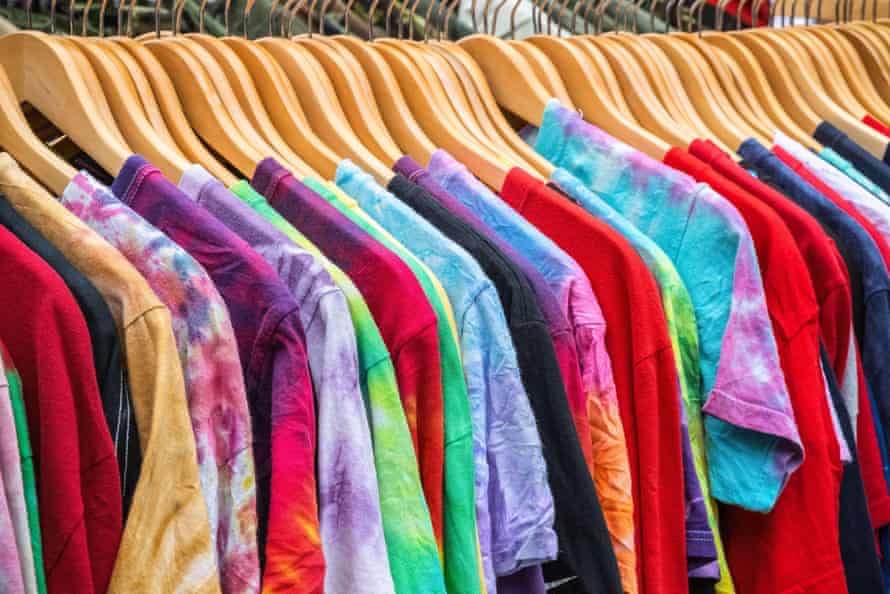Shared from www.theguardian.com
More so than other basic items of clothing, T-shirts are not all created equal. Almost everyone I’ve ever met has a favourite one. Sometimes the reasons are tangible: the softness of the fabric, the fall through the body, the neckline. Sometimes they’re more elusive, such as the way it makes us feel or how well we sleep in it. And sometimes they’re extremely sentimental: a T-shirt from a concert, a team, a relationship.
For my friends who collect vintage tees, the reasons are even more complex. When they find and buy a piece of history they can wear, their excitement and enjoyment is palpable, like they’ve captured a moment in time: that Janet Jackson concert, the original Lion King movie, when the Bulls were champions.
But old shirts can be fragile. This week I asked some expert collectors how to keep vintage tees in good condition.
Wear them gently
By definition, vintage T-shirts will have aged, so the fibres they’re made of are more delicate and need to be handled with care. Whenever you’re wearing a vintage tee, try to keep this in mind and be wary of doing anything too messy.
Ryan Wodson, the co-owner of Melbourne vintage store Retrostar, says “food and drink stains or tears can very quickly wreck a piece of history for good”. His suggestion? “If you want it for a long time, treat it that way.”
He recommends being gentle with your vintage tees and keeping them clean so they don’t need to be washed too often. “The more you wash something, the faster it will show wear,” he says. “I try to avoid washing any vintage tees when they don’t really need it.”
A cautious approach will also keep the collar in good shape. “Many vintage tees have a higher collar than usual,” Wodson says. When getting dressed or undressed, “try not to tug at [the collar] or pull at it … the less you mess with a tee, the better.”
Preserving the print
The print on a vintage tee is usually the most exciting and valuable detail, and unfortunately one of the first things to show signs of wear.
According to Wodson, prints start to fade for two reasons: washing and sunlight. “If you don’t want a faded tee, always hang it inside-out after washing,” he says. Hand washing, as infrequently as possible, will avoid agitation and wear from the washing machine.
Wash with care
While washing less is ideal, sometimes you will obviously need to clean your vintage T-shirts. To protect them, Leroi Waddington, the co-owner of Route 66 in Sydney, suggests placing them inside a pillowcase before hand washing or machine washing on cold. He says to only machine dry a T-shirt if you want to shrink it.
If a tight or cropped T-shirt doesn’t appeal to you, dry it by turning it inside out, hanging it on a clothes rack and keeping it out of direct sunlight.
Handling holes
Moth holes and rips in the fabric are some of the other effects of ageing. One option is to embrace these imperfections. “Holes are part of a great vintage T-shirt,” says Wodson. “You are often wearing something that no one else will see again. They’ll love it because it’s unique, not because it’s perfect.”
Waddington also feels the holes give a T-shirt more character, but says if you don’t want holes you can always get them repaired and stitched. He recommends engaging a tailor or invisible mender if you’re not confident with a needle and thread.
Shopping tips

If you’re wondering whether that “It’s time” T-shirt is really from 1972, there are a few ways to spot an authentic vintage find. The first thing to do, Wodson says, is to check the print for a copyright symbol and year. Then check the label.
He says an obvious giveaway for fake vintage is a modern label from a brand you can buy today. Instead keep an eye out for labels from the 80s (which were made of silk) and 90s (which were made of paper).
Also check where the T-shirt was manufactured. The big shift away from domestic apparel production in Australia, the US and parts of Europe took place over the 1990s. For American concert or sports tees that predate the 1990s, “made in the USA is always a good sign,” Wodson says.
Waddington also suggests doing research on the details on the label to verify a T-shirt’s authenticity. Other things to look out for are a single stitch hem and 35/65% poly-cotton blends, because they were more common in the 1980s.
Images and Article from www.theguardian.com

